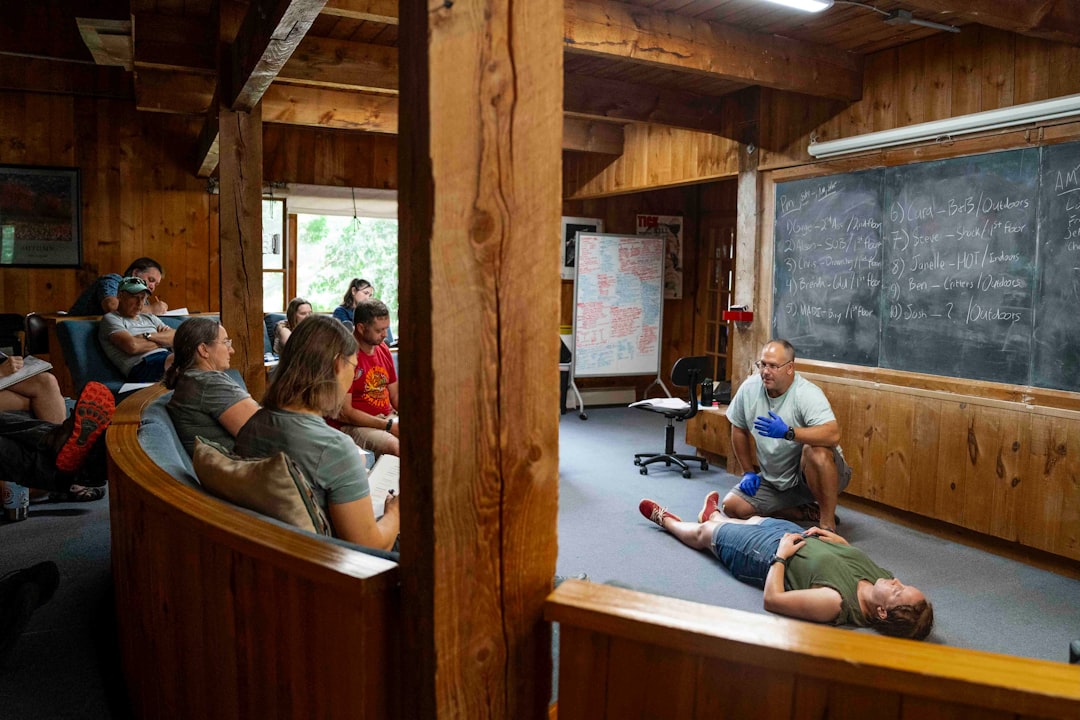A Sudden Shift in the Wild (Image Credits: Unsplash)
Gray skies hung over the silent park entrances as gates clanged shut, leaving familiar paths deserted under the weight of uncertainty.
A Sudden Shift in the Wild
Imagine dedicated park rangers, usually knee-deep in wilderness rescues or guiding hikes, suddenly swapping boots for chalkboards. That’s the reality hitting national parks right now amid the 2025 federal government shutdown. With funding frozen, many parks have closed their doors, forcing rangers to furlough or find creative ways to stay connected to their mission.
This isn’t just about lost wages; it’s a scramble to preserve education and conservation efforts. Rangers, trained to protect America’s natural treasures, are channeling that passion into local schools. Their impromptu classroom gigs keep the spirit of the parks alive, even if the landscapes themselves sit unattended.
One ranger shared how this pivot feels like trading a roaring river for a room full of curious kids. Yet, it highlights the resilience baked into these public servants. During peak fall foliage season, the timing couldn’t be worse, but these educators are making the best of it.
Why Parks Are Feeling the Squeeze
The shutdown has slashed staffing by half in many areas, leaving trails open but unmonitored. Visitors wander without guidance, and maintenance grinds to a halt. Garbage piles up, restrooms close, and safety checks vanish, turning cherished escapes into potential hazards.
National parks draw millions yearly, pumping billions into nearby economies. Now, small towns near these sites report daily losses in the millions. Furloughed workers, including rangers, face unpaid bills while essential services limp along on bare bones.
Experts warn that prolonged closures could harm wildlife monitoring and emergency responses. Hurricanes and other natural events add extra strain, as rangers who once coordinated evacuations now sit sidelined. It’s a stark reminder of how fragile these operations can be without steady funding.
Rangers Hit the Books – Literally
In a clever twist, furloughed rangers are volunteering as guest teachers, bringing park lore straight to students. Lessons cover everything from animal habitats to climate impacts, often with hands-on demos using everyday items. This move not only fills the education gap but also keeps rangers engaged and visible in their communities.
Schools in park-adjacent areas are snapping up these opportunities. Kids get virtual tours via stories and props, sparking interest in conservation. One program even pairs rangers with science classes, turning abstract ecology into real-world adventures.
Though unpaid, these sessions provide a sense of purpose. Rangers report feeling reenergized by wide-eyed questions, a far cry from the isolation of shutdown days. It’s proof that passion for nature doesn’t clock out with the government.
The Bigger Picture: Shutdown’s Ripple Effects
Beyond classrooms, the shutdown disrupts broader park operations. Coast Guard and other federal teams, vital for hurricane tracking, work without pay, heightening risks during storm season. National parks in hurricane-prone zones, like those in Florida, face unattended vulnerabilities.
Local economies suffer as tourism dips. Hotels empty, guides idle, and families rethink trips. The National Parks Conservation Association estimates massive daily hits to surrounding businesses, underscoring parks’ role as economic engines.
Politicians debate funding, but on the ground, the human cost mounts. Rangers, ever adaptable, embody the parks’ enduring appeal. Their classroom forays show how one shutdown can’t dim the call of the wild.
Stories from the Frontlines
Take a ranger from a coastal park, now leading birdwatching workshops in a high school gym. Students dissect feathers and learn migration patterns, eyes lighting up at tales of stormy flights. These sessions bridge the gap between closed gates and open minds.
Another group focuses on indigenous histories tied to park lands, inviting elders to co-teach. It’s a way to honor cultural stewardship while the physical sites wait. Parents rave about the fresh take on learning, calling it a silver lining in tough times.
Challenges persist, like coordinating without resources. Still, rangers improvise with sketches and shared memories. Their efforts remind everyone that education about nature thrives anywhere, anytime.
Looking Ahead: Hope on the Horizon
As negotiations drag on, rangers hold the line through teaching. This adaptability could inspire long-term programs blending parks with schools. Full reopening would ease pressures, but these innovations might stick around.
Communities rally with donations for furloughed staff, showing widespread support. The shutdown tests resolve, yet it also spotlights parks’ irreplaceable value. Rangers’ classroom pivot proves they’re guardians in any setting.
- Key takeaways: Shutdowns force creative adaptations, like rangers teaching in schools.
- Parks remain vital for education and economy, even when closed.
- Resilience shines through volunteer efforts amid uncertainty.
In the end, while trails grow quiet, the lessons echo louder. These rangers aren’t just surviving the shutdown; they’re expanding its reach. What stories have you heard from affected parks? Share in the comments below.




